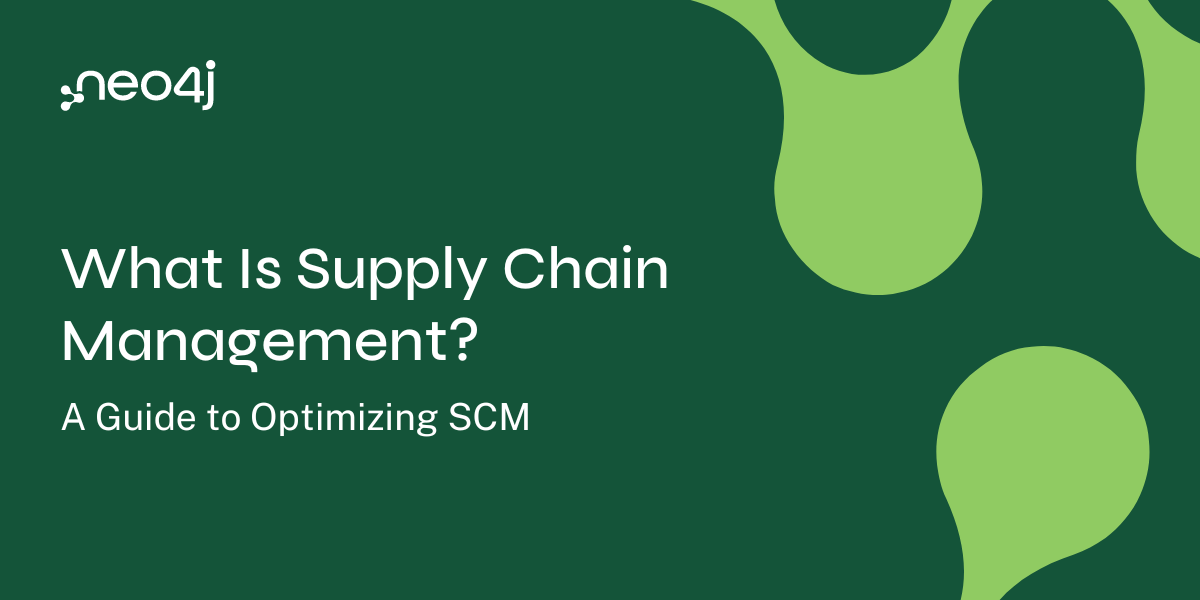We are excited to announce NODES 2022, Neo4j’s Online Developer Expo and Summit, on November 16th and 17th! The call for papers (CFP) is open now through August 20, 2022. In its fourth edition, NODES is a two-day conference of highly technical presentations by developers and data scientists solving problems with graphs. We want to hear from you, so submit your talk!
This week’s newsletter includes a rich harvest of tutorials and articles to stimulate and entertain! In the Event Graphs tutorial, you’ll use Cypher to construct and analyze event knowledge graphs and eventually construct a more advanced type of process model.
You won’t want to miss Graph Data Science for Supply Chains, Part 2, where Zach Blumenfeld applies graph algorithms relevant to supply chain analytics. He uses the results for downstream inference to investigate delays at different airports, demonstrating how the logistics network structure may affect freight delivery performance.
Cheers,
Yolande Poirier
FEATURED COMMUNITY MEMBER: Alexander Jarasch
Alexander is the head of data and knowledge management at the German Center for Diabetes Research. His expertise spans from data and knowledge management solutions in diabetes research to IT project management, Neo4j graph databases of clinical trials and basic research. Alex was involved in a Neo4j implementation to combine heterogeneous research data sources and connect data across disciplines and locations in order to stop the emergence and progression of diabetes. He also won the bytes4diabetes award for the DZDconnect project “graph to fight diabetes” and using connected data to intensify research in diabetes and connected diseases. He is one of the Neo4j Ninjas and is available on the community platform. You can also find him on LinkedIn.

MACHINE LEARNING: Using Neo4j GDS in Python to Improve ML Models
Tomaz Bratanic demonstrates the use of graph algorithms in Neo4j Graph Data Science to increase the accuracy of a machine learning model. Follow along with the code examples using the Neo4j Desktop application and an anonymized dataset from a P2P payment platform.GDS FOR SUPPLY CHAIN, PART 2: Creating Informative Metrics and Analyzing Performance in Python
Following up on part 1 of this series, Zach uses Neo4j Graph Data Science in Python to capture key centrality and community metrics. He then uses graph algorithms as predictive signals to uncover trends and deliver actionable insights.NEO4J LIVE: Code-Golf with Michael
TUTORIALS: Event Graphs
GRAPHS: Become a Knowledge Graph Jedi
TWEET OF THE WEEK: @stevejb
Don’t forget to retweet if you like it!#DevSpaces in realtime. In 1min we start a DevSpace, pull the #neo4j docker image & run it, open the web interface, run a py script to add data, run Cypher query to visualize.
— Stephen J. Barr (@stevejb) July 12, 2022
Repo: https://t.co/ptrTKdy8Sz
Prefix repo URL w/ https://t.co/24YBlodAYT to start a #graviton3 DevSpace pic.twitter.com/v8ASqWxEKn
… Of Special Interest
- neovis.js, graph visualizations powered by vis.js with data from Neo4j. Very cool project!
- An Interview with Dr Alexander Jarasch at the German Center for Diabetes Research. Interesting discussion!
- Did you miss the book? Full Stack GraphQL Applications With React, Node.js, and Neo4j by William Lyon. Great read!
- GraphSummit continues its global trek. The next stops are Tel Aviv, Singapore, Bangalore, Stockholm and Copenhagen. Save your seat.



